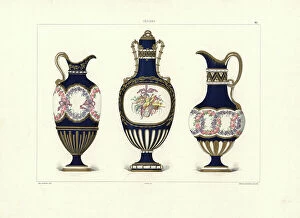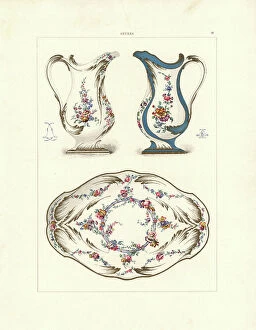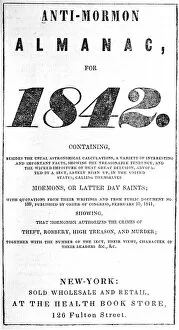Biased Collection
"An Allegory of Biased Negotiations: The Untold Story of WW1 Peace Talks" In the tumultuous aftermath of World War I
All Professionally Made to Order for Quick Shipping
"An Allegory of Biased Negotiations: The Untold Story of WW1 Peace Talks" In the tumultuous aftermath of World War I, peace negotiations were underway to restore harmony and stability to war-torn nations. However, hidden beneath the surface lay a web intentions that threatened to undermine any chance for true reconciliation. Like Sir Henry Sidney, Lord Deputy, who embarked on a progress through Ireland accompanied by an armed force, these negotiations were marred by ulterior motives. A soldier holding a battle-axe symbolically handed a spear to an Irish chieftain in full dress - an act seemingly conciliatory but laced with underlying power dynamics. Meanwhile, an illustration from an Anti-Catholic pamphlet depicted women and children being mercilessly murdered. This chilling image served as a reminder that bias can infiltrate even the most sacred moments of diplomacy. As Sir Henry Sidney returned triumphantly to Dublin Castle amidst pomp and circumstance, he was received by the Lord Mayor and Aldermen. Yet this grandeur only masked the truth - that behind closed doors, decisions were made with partiality rather than genuine understanding. The Irish chieftain sought solace in receiving the priest's blessing before departing for battle against their English oppressors. In stark contrast stood the English army donned in full armor; their resolve hardened by prejudice rather than justice. Sidney himself engaged in parleys with defiant messengers from Ireland while his own troops prepared for battle. The clash between negotiation and aggression highlighted how biased perspectives hindered any hope for peaceful resolution. Marching forward with standards held high and trumpets blaring, Sidney's army displayed its might while disregarding empathy or compromise. Their march became symbolic of how biases perpetuated conflict instead of fostering understanding. Upon their return in triumph, English soldiers carried severed Irish heads as trophies - a grotesque display meant to instill fear rather than promote unity. Leading captives by halters, they reveled in their biased victory.





